21+ Sample Fundraising Letters
-
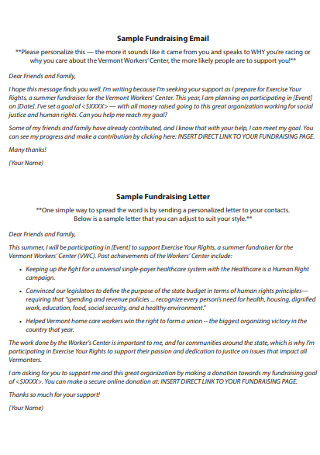
Fundraising Email Letter
download now -
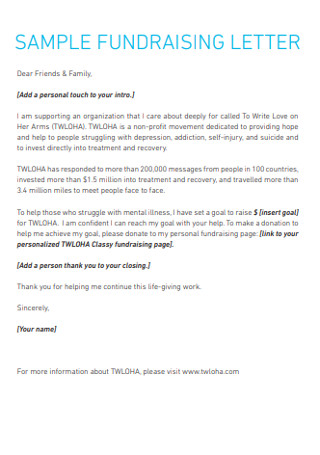
Sample Fundraising Letter
download now -

Fundraising Letter Example
download now -
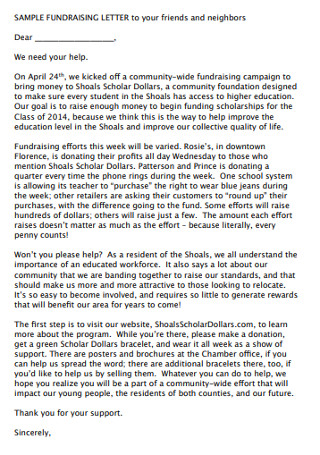
Neighbours Fundraising Letter
download now -
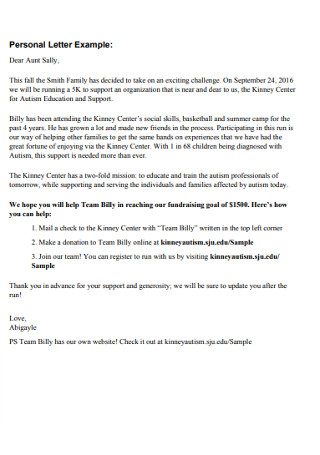
Fundraising Personal Letter Example
download now -
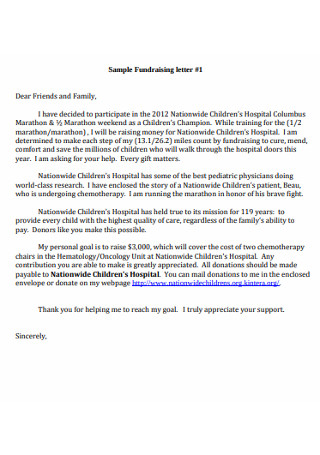
Sample Family Fundraising letter
download now -
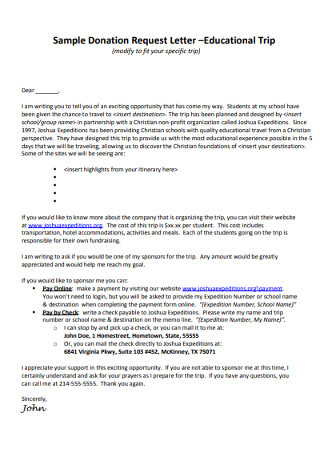
Sample Fundraising Donation Request Letter
download now -

Basic Fundraising Letter
download now -
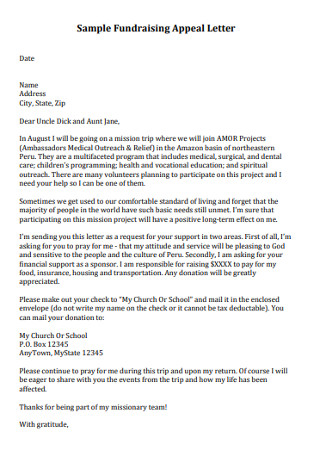
Sample Fundraising Appeal Letter
download now -
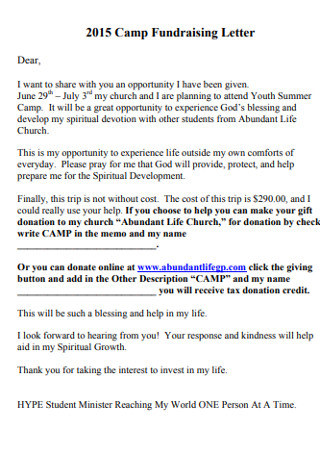
Camp Fundraising Letter
download now -
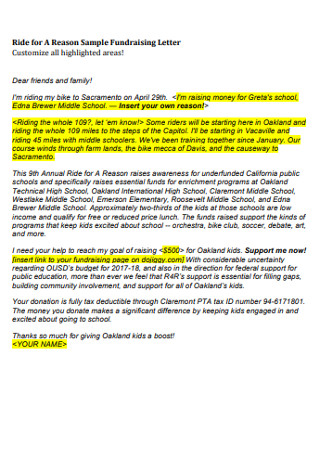
Ride fo Reason Sample Fundraising Letter
download now -
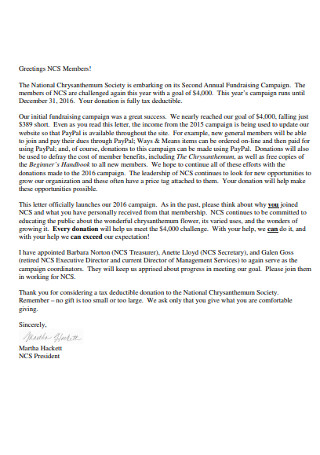
Annual Fundraising Letter
download now -
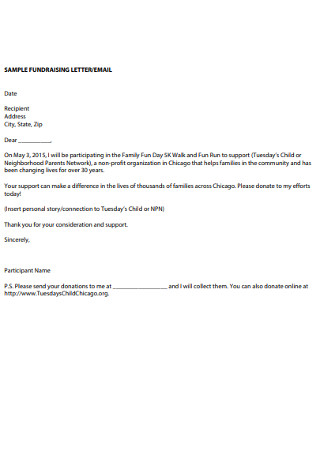
Sample Fundraising Email Letter
download now -
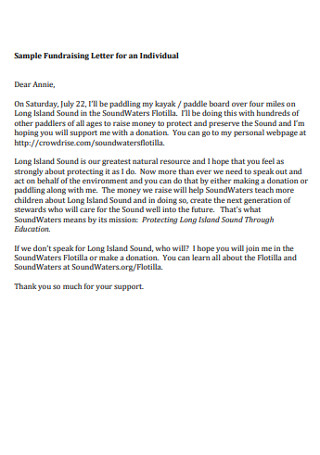
Sample Fundraising Letter for an Individual
download now -
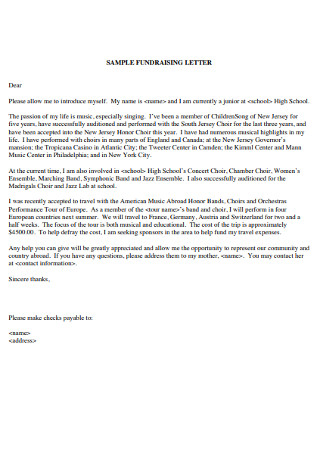
Standard Fundraising Letter
download now -
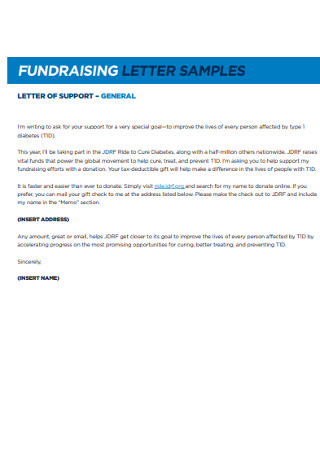
General Fundraising Letter
download now -
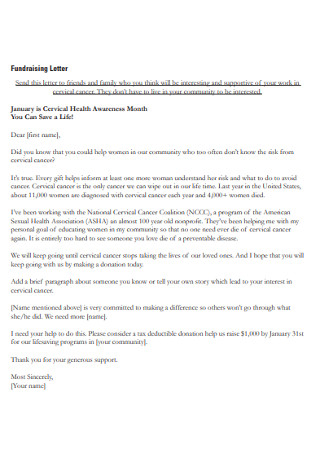
Formal Fundraising Letter
download now -
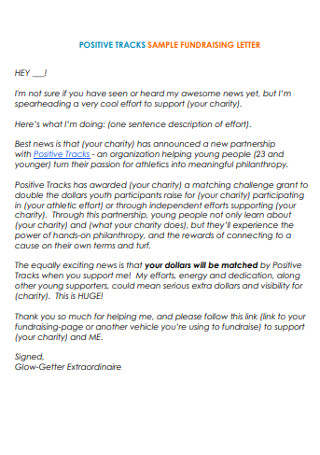
Sample Positive Tracks Fundraising Letter
download now -
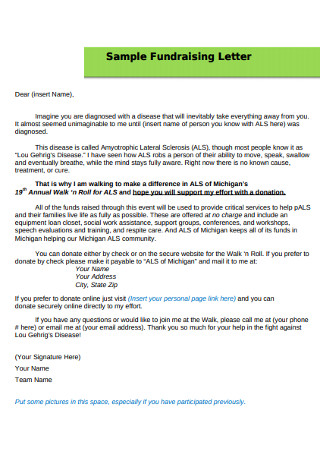
Printable Fundraising Letter
download now -
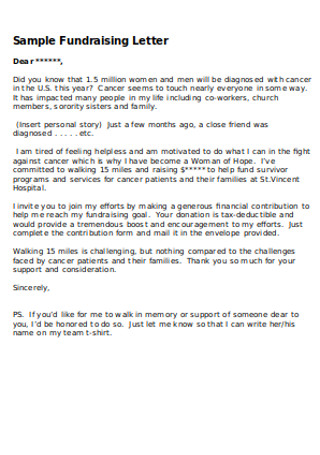
Sample Fundraising Letter in DOC
download now -

Formal Fundraising Letter Template
download now
What Is a Fundraising Letter & Why Is it Necessary?
A fundraising letter is a type of correspondence that allows you to detail the needs of your organization and generate donations, in-kind contributions, sponsorship, and volunteers for your project or event. It also lets donors and sponsors know what they can do to get involved in the program through the emotional bond you create in your message.
While sending out fundraising letters does sound a bit old fashioned, you’ll come to find that they can be instrumental in getting your message across clearly and coherently. Consider this as an opportunity for you to share your story with others, show what you can and have achieved, and rally support for your mission to get the attention it deserves. There’s more to it than to simply raise money, as fundraising letters also give your organization a voice for the public to listen to. It can be written by anyone for any reason, as long as your intentions remain pure.
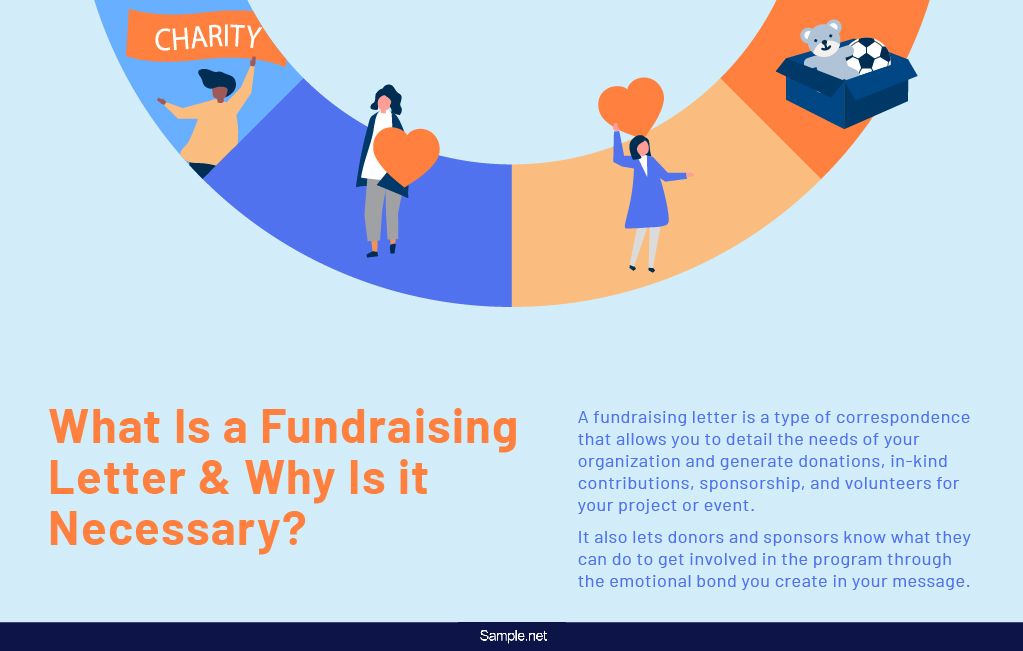
When Does an Organization Send a Fundraising Letter?
Fundraising letters can come in handy at any given case, but sending these letters requires the right timing to leave a positive impact on your targeted audience. The secret is to keep them focused and relevant for prospects to act accordingly.
The following are instances when fundraising letters are most useful:
1. Gathering Donations
We generally associate fundraising letters with donation appeals. It’s a standard way for an organization to ask donations from individuals and corporations that might be interested in, or passionate about the principles of your cause. And although these letters are common all year round, most nonprofits employ them as part of their annual campaign at the end of every year. It’s an opportunity for you to make the most out of the holiday season, particularly at a time when people are caught up in the spirit of giving. You can also choose to deliver your letter by post or email—whatever you think is most convenient for donors and sponsors.
2. Seeking Support
Most organizers get the funds to execute their event plans through a sponsorship letter. That’s because not many organizations have the budget to set up an event without monetary assistance from an external entity, especially when hosting major events such as galas or marathons. So instead of digging your pockets for dimes, you can send out an event sponsorship letter to possible patrons to help cover the costs. In exchange for the sponsorship, you can offer advertising space in the form of constant brand exposure through event flyers, posters, TV commercials, and billboard ads.
As for sponsorship from individual donors and volunteers, they often have the option to reveal their names or maintain anonymity.
3. Asking for Volunteers
Nonprofit organizations are almost always understaffed. It’s no wonder why animal shelters, food drives, and even school functions constantly seek volunteers to help out in their programs. And since it can be challenging to find people who can willingly dedicate their time and energy to support a cause, it’s essential to start early. You can begin sending out your letters weeks or months before the project or event you have planned, giving you enough time to plot and assign tasks to everyone who enlists.
However, be sure that the principal details of the event are already in place before you make a call for participants. Anything unclear to volunteers may cause them to lose interest and back out at the last minute.
4. Requesting for Auction Items
If you’ve ever attended an auction before, you’d know how unique and desirable most of the items can be for bidders. But these items aren’t scraps from junkyards or garage sales, as they often come from donors with rare collections, historic bloodlines, and high-class connections. And since it isn’t customary to ask people to donate their stuff directly, you can quickly obtain these auction items from donors by writing a fundraising letter in hopes that they might want to contribute to your cause.
While we can all agree that a fundraising letter asking for auction items can seem intimidating to write, you’d be surprised to know that many donors are more than willing to give some of their stuff away for your upcoming auction. All you have to do is to explain what your organization might need and to make it easy for them to express their interest in participating in the activity.
5. Promoting Fundraising Events
Every year, the world’s most renowned designers and celebrities come together for a night of luxury and fashion. But amidst the glitz and glamour of the Met Gala, how old were you when you found out that this was an annual fundraising event for the benefit of the Metropolitan Museum of Art?
Fundraising events like this often attract hundreds to thousands of participants from around the world. But because you won’t always get the chance to have the likes of Rihanna or Kim Kardashian to attend your event, getting people to come to your fundraiser won’t be easy. Therefore, your invitation should be persuasive enough to get favorable responses from your recipients, as the more people that come, the more successful your event will be. Hence, it’s a good idea to send out your letters as early as possible, so guests have enough time to consider and respond to your invite.
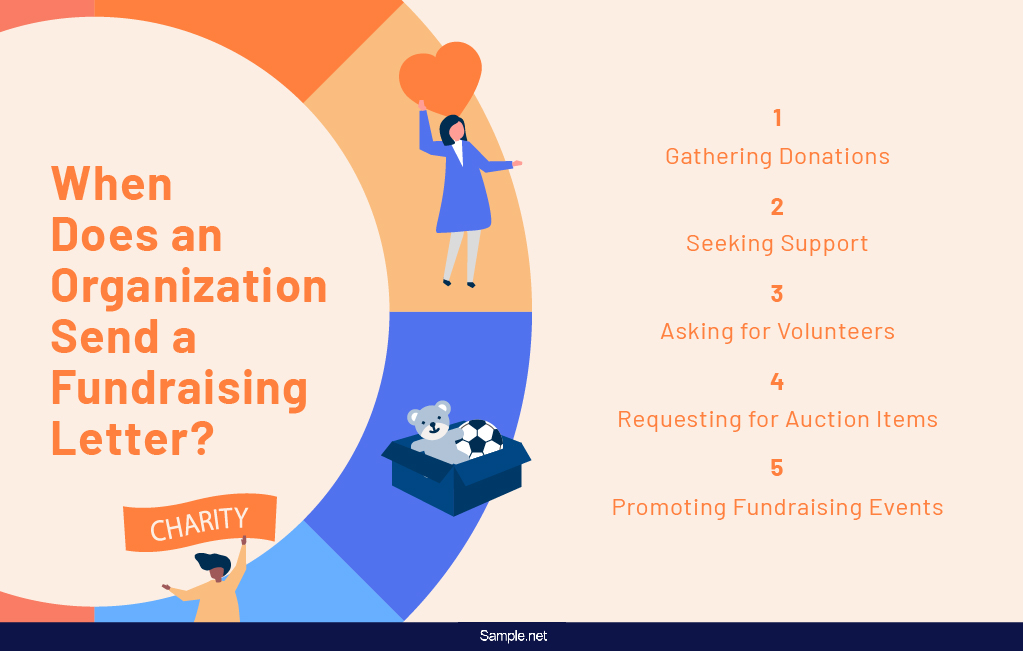
Why Should You Start a Fundraising Campaign?
Many nonprofits see fundraising as a mere means of making money. But that isn’t always the case, as fundraising campaigns offer a ton of other benefits to nonprofits that know how to plan and execute them correctly. Listed below are some of the key advantages that prove how strategic fundraising contributes to a high-functioning organization.
How to Write a Good Fundraising Letter
Charity Navigator reports that about 14% of all donations go toward charities that center on educational programs and services. However, according to a separate evaluation by the nonprofit, some charities spend more than 50% of their budget on professional fundraising fees, forcing only very little of the generated funds to go to the actual programs that they promote.
Although it’s easy to see why some organizations would choose to invest in professional fundraising activities, it’s not exactly the best option for those that don’t have a lot of funds to start with. Luckily, you can take a smaller yet smarter approach with a letter. It’s a simple strategy that enables you to communicate with potential donors, sponsors, and volunteers with nothing to lose. So to help you write a compelling appeal, take note of these steps:
Step 1: Get Planning
Like other business letters, you wouldn’t want to write a fundraising letter without a plan. You don’t want to go into the writing process without a defined goal to keep you guided, or you may end up with a poorly written material. Careful planning allows you to think about the best way to deliver your request and encourage recipients to act upon it. The best way to do so is to ponder on your intentions and decide what you want to ask from your recipients. If you need money and volunteers to run a charity event, you must consider what people expect to find in those types of fundraising letters. Even though it isn’t necessary to prepare a written plan, it does help if you begin with a draft or an outline of the letter to help streamline the succeeding steps.
Step 2: Attract Attention
If your letter fails to capture a person’s attention from the get-go, don’t expect people to take time out of their day to read it. Introductions need to be powerful to make an impression likely enough to motivate further reading. You can begin your letter with a famous quote, a rhetorical question, or even a short story. Real-life examples that relate to your cause allow readers to visualize what your nonprofit stands for as a selfless entity. It’s a smart way to keep your audience engaged, while at the same time proving your credibility.
As an even better approach, you can personalize the letters you send to existing or past donors by letting them know how their previous donations have helped your organization and its programs. Everyone wants to know where their donations go and if it made any difference to your cause. That way, your letter will have a more personal touch to it as opposed to being a part of some massive direct marketing campaign. So by providing a track record of what you’ve managed to achieve so far, you’re also giving donors a reason to pledge for your current project.
Step 3: Emphasize the Need
An effective way to get people to support your project or event is to provide a list of donation amounts and the impact that these funds will have on your program. For instance, for every hundred dollars given, donors can supply an entire family with running water for a month. Explaining the need for monetary or material assistance should help convince a person to make a difference in whatever means they can. This strategy encourages people to donate a particular amount (or more) in response to your call-to-action. It’s also best to send a reply card along with your fundraising letter for easy giving, as making these transactions convenient to donors does make a difference in their will to give.
Step 4: Make Your Request Known
We define a fundraising letter as an appeal letter due to our intentions for sending them. Most donors will not offer support for your cause unless there is a need to, which is why your message must focus on the act of asking. But don’t make the mistake of using vague and indirect statements, as it might take a while for people to realize what you’re really trying to say. Instead, make it a point to be specific and straightforward with what you want to ask from your audience by making your ask very clear. The more direct you are with your intentions, the more likely your donors are to offer what they have.
A huge part of successful fundraising depends on your ability to remain authentic when developing human connections. You can’t afford to miss this opportunity by ignoring the value it brings to your organization and its beneficiaries. That is why you must compose fundraising letters that are personable and compelling enough to prompt action. Both nonprofits and individuals may benefit from good letter writing when raising funds for their cause, making it an effective way of forwarding an appeal. So, get started with your fundraising letters today using the letter samples and templates provided!
